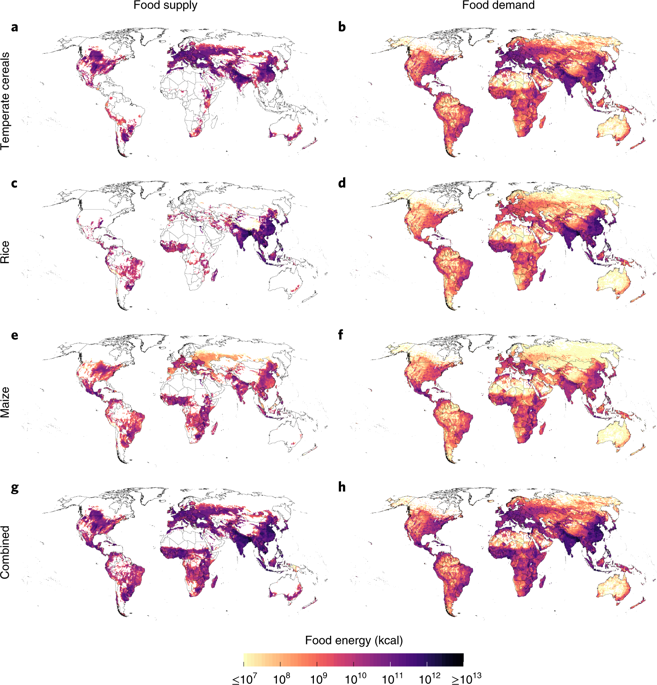Nature Food ( IF 23.6 ) Pub Date : 2020-04-17 , DOI: 10.1038/s43016-020-0060-7 Pekka Kinnunen , Joseph H. A. Guillaume , Maija Taka , Paolo D’Odorico , Stefan Siebert , Michael J. Puma , Mika Jalava , Matti Kummu

|
The distance between the origin and end-point of food supply chains, and the ‘localness’ of food systems, are key considerations of many narratives associated with sustainability. Yet, information on the minimum distance to food crops is still scarce at the global level. Using an optimization model based on ‘foodsheds’ (that is, self-sufficient areas with internal dependencies), we calculate the potential minimum distance between food production and consumption for six crop types around the world. We show that only 11–28% of the global population can fulfil their demand for specific crops within a 100-km radius, with substantial variation between different regions and crops. For 26–64% of the population, that distance is greater than 1,000 km. Even if transnational foodsheds were in place, large parts of the globe would still depend on trade to feed themselves. Although yield gap closure and food loss reductions could favour more local food systems, particularly in Africa and Asia, global supply chains would still be needed to ensure an adequate and stable food supply.
中文翻译:

当地粮食作物的生产可以满足不到三分之一人口的需求
食品供应链的起点和终点之间的距离,以及食品系统的“局部性”,是与可持续性相关的许多叙述的主要考虑因素。然而,在全球范围内,关于与粮食作物最短距离的信息仍然匮乏。使用基于“食物集散区”(即具有内部依赖关系的自给自足的区域)的优化模型,我们计算了全球六种农作物的粮食生产与消费之间的潜在最小距离。我们表明,全球人口中只有11–28%可以满足他们在100公里半径内对特定作物的需求,并且不同地区和作物之间存在很大差异。对于26-64%的人口,该距离大于1,000公里。即使有跨国食堂,全球大部分地区仍将依靠贸易来养活自己。尽管缩小产量差距和减少粮食损失可能有利于更多的地方粮食系统,特别是在非洲和亚洲,但仍需要全球供应链来确保充足和稳定的粮食供应。











































 京公网安备 11010802027423号
京公网安备 11010802027423号